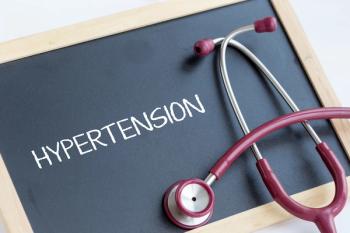
- July 2025
- Volume 31
- Issue Spec. No. 8
- Pages: SP479-SP480
Adding Perioperative Durvalumab to Chemo Combo Boosts EFS, Overall Survival in Patients With Gastric, GEJ Cancer
Key Takeaways
- The MATTERHORN trial showed improved EFS and OS with durvalumab plus chemotherapy in gastric/GEJ cancer patients compared to chemotherapy alone.
- Durvalumab treatment resulted in a higher pCR rate and did not compromise surgical outcomes, with similar adverse event rates to the placebo group.
MATTERHORN shows durvalumab enhances survival in early-stage gastric and GEJ cancer, revolutionizing treatment approaches for patients.
Patients with newly diagnosed gastric or gastroesophageal junction (GEJ) cancer who received the PD-L1 inhibitor durvalumab (Imfinzi; AstraZeneca) and chemotherapy both before and after surgery were more likely to be alive and event-free after 2 years than those receiving chemotherapy only, according to data presented at the 2025 American Society of Clinical Oncology Annual Meeting.1
Results from the phase 3 MATTERHORN trial (NCT04592913) showed that in addition to their success in treating later-stage gastric cancer, immune checkpoint inhibitors can work as well or better for patients who are just starting cancer treatment. The study was simultaneously published in the New England Journal of Medicine.2
Durvalumab is already approved as a single agent or in combinations to treat hepatocellular carcinoma, advanced biliary tract, and muscle-invasive bladder cancers, as well as types of non–small cell and small cell lung cancers.3
Checkpoint inhibitors, including PD-1 agents nivolumab (Opdivo; Bristol Myers Squibb) and pembrolizumab (Keytruda; Merck), have been used for later-stage gastric cancer for years, and MATTERHORN demonstrated success for immunotherapy in early-stage cancer.
MATTERHORN evaluated use of durvalumab with the chemotherapy combination 5-fluorouracil, leucovorin, oxaliplatin, and docetaxel (FLOT), which the study authors noted is established as perioperative treatment for locally advanced gastric or GEJ cancers.2
Gastric and GEJ cancers will account for 1.2 million deaths this year, the study’s lead author, Yelena Y. Janjigian, MD, chief, Gastrointestinal Oncology Section, Memorial Sloan Kettering Cancer Center in New York, New York, said during a news briefing. She also noted the rise of these cancers in patients younger than 50 years.
“We know that immunotherapy works for stage IV disease, in the advanced setting, and metastatic disease. We’ve been using PD-1 agents for years now, but [immunotherapy] has not been proven to help patients in early-stage cancer,” she said. “The MATTERHORN study was designed to address this problem and demonstrate benefit for patients with localized, nonmetastatic disease going through surgery.”
In this international trial, patients were randomly assigned 1:1 to receive durvalumab or placebo for 2 cycles along with FLOT, both given intravenously. This was followed by surgery between 4 and 8 weeks after neoadjuvant therapy. Next came 2 more cycles of durvalumab or placebo and FLOT, followed by a 1500-mg dose of durvalumab or placebo, administered intravenously every 4 weeks for another 10 cycles.
The primary end point was event-free survival (EFS), which was the time from randomization until the date of disease progression or death from any cause. Key secondary end points were overall survival (OS) and pathological complete response (pCR).
Patients received a baseline CT scan or MRI within 28 days of being randomly assigned. For the adjuvant period, imaging took place 4 weeks after surgery and within 28 days of the start of adjuvant therapy. Imaging was also performed within 4 weeks after the last dose of neoadjuvant FLOT and before surgery. Tumor assessments were performed every 12 weeks for 2 years and then every 24 weeks until progression.
Following enrollment, the randomized population had 948 patients, with 474 receiving durvalumab plus FLOT and 474 receiving placebo plus FLOT. After a median follow-up of 31.5 months, results showed the following:
- Overall, 167 patients (35.2%) in the durvalumab group and 218 patients (46.0%) in the placebo group had disease progression, had recurrence, or died.
- Two-year EFS was 67.4% in the durvalumab group and 58.5% in the placebo group (HR, 0.71; 95% CI, 0.58-0.86; P < .001).
- Two-year OS was 75.7% in the durvalumab group and 70.4% in the placebo group. The HR for the period after 12 months was 0.67 (95% CI, 0.50-0.90; P = .03).
- The percentage of patients with pCR was 19.2% in the durvalumab group and 7.2% in the placebo group.
- Grade 3 or 4 adverse events (AEs) were seen in 340 patients (71.6%) in the durvalumab group and 334 (71.2%) in the placebo group.
- The percentage of patients with delayed surgery was 10.1% in the durvalumab group and 10.8% in the placebo group, and the percentages with delayed start to adjuvant therapy were 2.3% and 4.6%, respectively.
Janjigian noted that the neoadjuvant treatment did not compromise patients’ ability to have a complete resection, which she said is always a concern for surgeons. She noted that more than half of patients completed an entire year of durvalumab, and the completion rate for FLOT was 61%, which she described as “not bad for this cohort of patients.”
“This will change practice for our patients, which is exciting to see,” she said, despite the fact that “these were not well-behaving cancers” that have invasive features and lymph node involvement.
In the subgroup analysis, patients did well regardless of geographic location, as this trial enrolled patients from 20 countries. There were no significant differences based on PD-L1 expression, tumor status at baseline, or whether patients were younger or older than 65 years. Men outnumbered women in the trial, and they had 35% reduced risk of progression or death, compared with 16% for women. Patients were stratified by geography as from Asia or other countries, due to the high rates of gastric cancer in Asia. White patients comprised 67% of the participants, and Asian patients comprised 20%; study authors noted that Black patients were underrepresented with just 10 patients (1.1%) across the 2 arms.1,2
Pamela L. Kunz, MD, director of the Center for Gastrointestinal (GI) Cancers at the Smilow Cancer Hospital and Yale Cancer Center in New Haven, Connecticut, said during a press briefing that the MATTERHORN results were the latest good news in treatment of GI cancers. She said the trial answers the question of whether patients can tolerate a multidrug regimen, which is important for this approach to make its way into local practice.
“This study will be practice changing,” Kunz said.
AstraZeneca funded the study.
References
1. Janjigian YY, Al-Batran SE, Wainberg ZA, et al. Event-free survival in MATTERHORN: a randomized, phase 3 study of durvalumab plus 5-fluorouracil, leucovorin, oxaliplatin, and docetaxel chemotherapy (FLOT) in resectable gastric/gastroesophageal junction cancer (GC/GEJC). J Clin Oncol. 2025;43(suppl 17):LBA5. doi:10.1200/JCO.2025.43.17_suppl.LBA5
2. Janjigian YY, Al-Batran SE, Wainberg ZA, et al; MATTERHORN Investigators. Perioperative durvalumab in gastric and gastroesophageal junction cancer. N Engl J Med. Published online June 1, 2025. doi:10.1056/NEJMoa2503701
3. Imfinzi indications. AstraZeneca. Accessed June 1, 2025. https://www.imfinzihcp.com/biliary-tract-cancers.html/
Articles in this issue
Newsletter
Stay ahead of policy, cost, and value—subscribe to AJMC for expert insights at the intersection of clinical care and health economics.














































